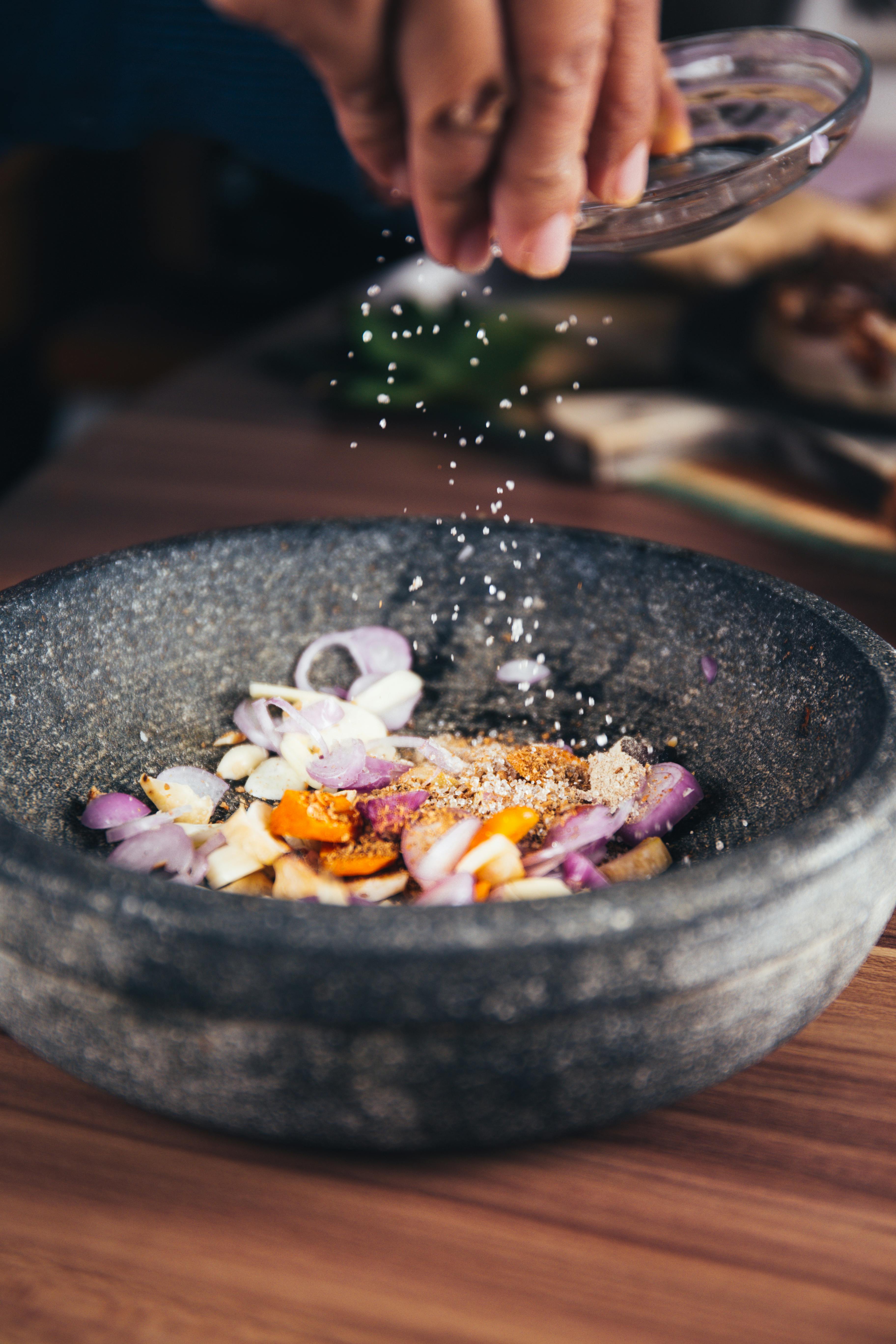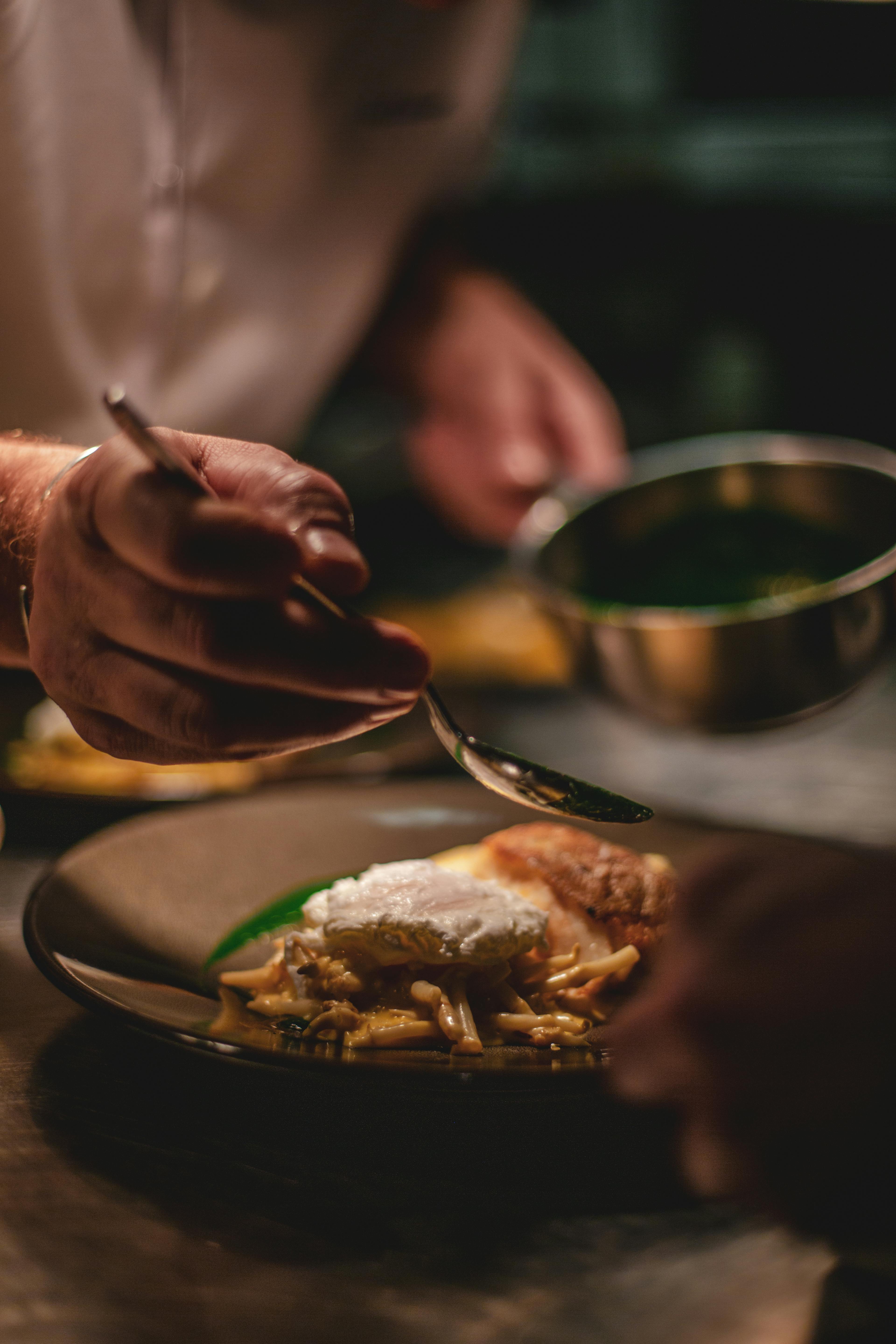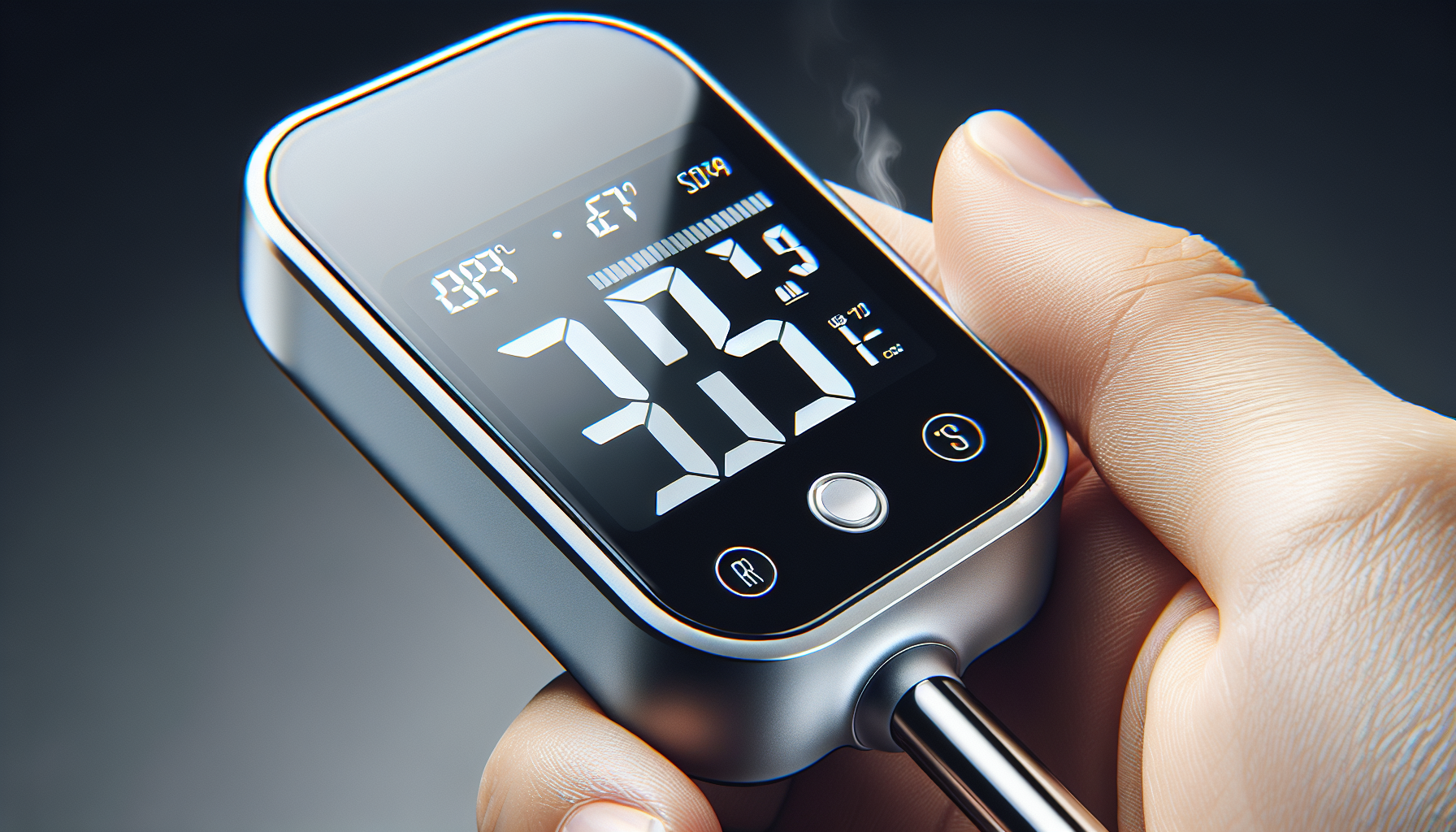Get ready to elevate your cooking game with the help of instant-read thermometers. Tastepan.com is here to provide you with all the information and recommendations you need to ensure precision cooking in your kitchen. These handy gadgets will take the guesswork out of cooking, giving you accurate readings within seconds. Whether you’re grilling, baking, or roasting, instant-read thermometers are a must-have tool for any home cook looking to achieve perfectly cooked meals every time. Say goodbye to overcooked or undercooked dishes and say hello to culinary perfection with the help of instant-read thermometers.

What is an Instant-Read Thermometer?
Definition
An instant-read thermometer is a handy kitchen tool used for measuring the internal temperature of food quickly and accurately. It provides instant temperature readings, allowing you to monitor the doneness of your food without having to guess or rely on visual cues. Whether you’re grilling, roasting, or baking, an instant-read thermometer is an essential gadget that ensures your food is cooked to perfection.
Types of Instant-Read Thermometers
There are several types of instant-read thermometers available on the market, each with its own features and benefits. Some common types include:
-
Digital Thermometers: These thermometers use electronic sensors to measure the temperature and display it on a digital screen. They are easy to read, provide accurate measurements, and often come with additional features such as preset temperature alarms and timers.
-
Analog Thermometers: Analog instant-read thermometers have a dial or a needle that indicates the temperature. While they may not be as precise as digital thermometers, they are still effective for basic cooking needs and are often more affordable.
-
Pen-Style Thermometers: Shaped like a pen, these thermometers are compact and easy to use. They usually have a thin probe that can be inserted into the food to measure its temperature. Pen-style thermometers are great for everyday cooking and quick temperature checks.
-
Wireless Thermometers: These thermometers allow you to monitor the temperature of your food remotely. They consist of a probe that is inserted into the food and a base unit that receives and displays the temperature readings. With a wireless thermometer, you can keep an eye on your food’s progress without having to be physically present in the kitchen.
Why Use an Instant-Read Thermometer?
Accurate Results
One of the main reasons to use an instant-read thermometer is to ensure accurate cooking results. Visual cues and cooking times can be unreliable, leading to overcooked or undercooked food. By measuring the internal temperature, you can achieve the desired level of doneness consistently and with precision. This is particularly important when cooking meats, poultry, and fish, where ensuring the right internal temperature is crucial for food safety and taste.
Safe Cooking Temperatures
Using an instant-read thermometer helps you follow safe cooking temperatures recommended by food safety organizations. This is especially important when it comes to poultry, ground meats, and leftovers, as these foods have a higher risk of containing harmful bacteria. By knowing the internal temperature, you can ensure that your food has been cooked to a temperature that kills any bacteria, reducing the risk of foodborne illnesses.

Choosing the Right Instant-Read Thermometer
When choosing an instant-read thermometer, there are a few factors to consider:
Probe Length and Design
Opt for a thermometer with a probe long enough to reach the center of the food without your hand getting too close to the heat source. A long probe also makes it easier to take readings from large roasts or turkeys. Additionally, consider the design of the probe; a thin and tapered probe allows for minimal damage to the food, preventing excessive juices from leaking out.
Temperature Range
Make sure the instant-read thermometer you choose has a temperature range suitable for the types of food you typically cook. Some thermometers are specifically designed for meat, while others have higher temperature ranges for candy-making or deep-frying. Ensure the thermometer can measure temperatures within the range you require for your cooking needs.
Response Time
The response time of an instant-read thermometer refers to how quickly it provides a temperature reading. Look for a thermometer that has a fast response time to save time and ensure you don’t keep your food out of the oven or off the grill for too long.
Digital vs Analog
Digital thermometers are generally easier to read and provide more accurate results compared to analog thermometers. They often come with additional features such as preset temperature alarms and timers, making them more versatile. However, if you prefer a simpler and more affordable option, an analog thermometer can still serve its purpose effectively.
How to Use an Instant-Read Thermometer
Calibrating Your Thermometer
Before using your instant-read thermometer, it’s important to ensure its accuracy by calibrating it. Fill a glass with ice and water, insert the thermometer’s probe into the water without touching the sides or bottom, and wait for it to stabilize. The thermometer should read 32°F (0°C) if it’s calibrated correctly. If not, follow the manufacturer’s instructions to adjust it accordingly.
Inserting the Probe Properly
To measure the temperature accurately, insert the probe into the thickest part of the food, making sure it’s not touching bone, fat, or gristle. For thinner cuts of meat, such as steaks or chicken breasts, insert the probe horizontally from the side. For larger cuts, such as roasts, insert the probe vertically from the top.
Reading the Temperature
Once the thermometer’s probe is properly inserted, wait for the temperature reading to stabilize. Digital thermometers often provide an instant reading, while analog thermometers may take a few seconds to settle. Carefully read the temperature displayed on the thermometer to determine the doneness of your food.

Tips for Precision Cooking
Monitoring Internal Temperatures
To achieve precision cooking, monitor the internal temperature of your food at regular intervals, especially during the final cooking stages. This will help you avoid overcooking or undercooking your food.
Avoiding Overcooked or Undercooked Food
By using an instant-read thermometer, you can ensure that your food is cooked to perfection and reaches the desired level of doneness. This eliminates the risk of serving undercooked or overcooked dishes, providing consistent results every time.
Testing Multiple Spots
When measuring the temperature of large cuts of meat, it’s important to test multiple spots to ensure even cooking. Different areas of the food may cook at slightly different rates, so checking the temperature in various places helps you identify any hot or cold spots and adjust your cooking accordingly.
Instant-Read Thermometers for Different Cooking Methods
Grilling
When grilling, an instant-read thermometer is essential for achieving the perfect level of doneness and ensuring the meat is safe to eat. Whether you’re cooking hamburgers, steaks, or chicken, use the thermometer to check the internal temperature to avoid undercooking or overcooking.
Roasting
Roasting meats, such as turkey, chicken, or beef, requires precision to achieve juicy and tender results. By monitoring the internal temperature with an instant-read thermometer, you can take the meat out of the oven at the ideal moment, preventing it from drying out or being undercooked.
Baking
Baking delicate pastries, bread, or cakes often requires precise temperature control. Instant-read thermometers help you determine when your baked goods are fully cooked, ensuring they are perfectly moist and not overdone.
Common Mistakes to Avoid
Not Cleaning the Probe
To maintain hygiene and accuracy, it’s crucial to clean the probe of your instant-read thermometer after each use. Wipe the probe with a cloth or wash it with warm, soapy water, making sure to remove any food residue or bacteria.
Inserting the Probe Too Early
Inserting the thermometer probe too early in the cooking process can lead to inaccurate readings. Wait until your food is close to being fully cooked before inserting the probe to obtain the most accurate temperature measurement.
Using a Thermometer with Low Temperature Range
Using a thermometer with a low temperature range may limit your cooking options. Ensure your instant-read thermometer can measure temperatures well above what you typically cook to accommodate any culinary experiments or specific cooking needs that may arise.
Maintenance and Care
Cleaning and Sanitizing
Proper cleaning and sanitizing of your instant-read thermometer are essential for maintaining food safety. Clean the probe thoroughly after each use, either by handwashing or using a dishwasher if the manufacturer’s instructions permit. Avoid submerging the entire thermometer in water and be cautious with hot surfaces to prevent any damage.
Storing Properly
Store your instant-read thermometer in a cool and dry place to keep it in good condition. Some thermometers come with protective cases or sleeves for safe storage, but if yours doesn’t, consider wrapping it in a clean cloth or placing it in a kitchen drawer away from excessive heat.
Benefits of Precision Cooking
Consistent Results
By using an instant-read thermometer, you can achieve consistent and reliable cooking results. Gone are the days of undercooked or overcooked meals. Instead, enjoy perfectly cooked food every time, pleasing both your taste buds and those of your guests.
Food Safety
Precision cooking ensures that your food reaches and maintains safe internal temperatures, eliminating any potential bacteria or pathogens. This is especially important when dealing with raw meats, where cooking to the recommended internal temperatures is crucial for food safety.
Saves Time and Effort
With an instant-read thermometer, you can take the guesswork out of cooking times and rely on accurate temperature readings instead. This saves you time by cutting down on unnecessary cooking or waiting, as well as the effort of constantly checking or poking your food to determine if it’s done.
Conclusion
An instant-read thermometer is an invaluable tool in any kitchen. It provides accurate temperature readings, promoting precision cooking and ensuring food safety. By choosing the right thermometer, using it correctly, and following recommended cooking temperatures, you can enjoy perfectly cooked meals with consistent results. So, say goodbye to guesswork and embrace the precision and ease that an instant-read thermometer brings to your culinary adventures. Happy cooking!

